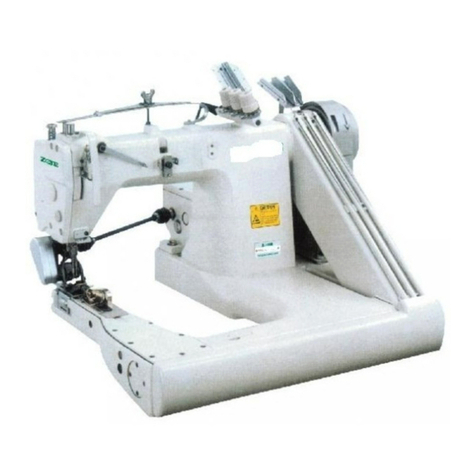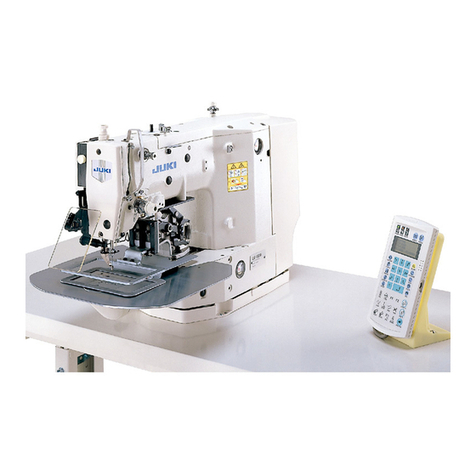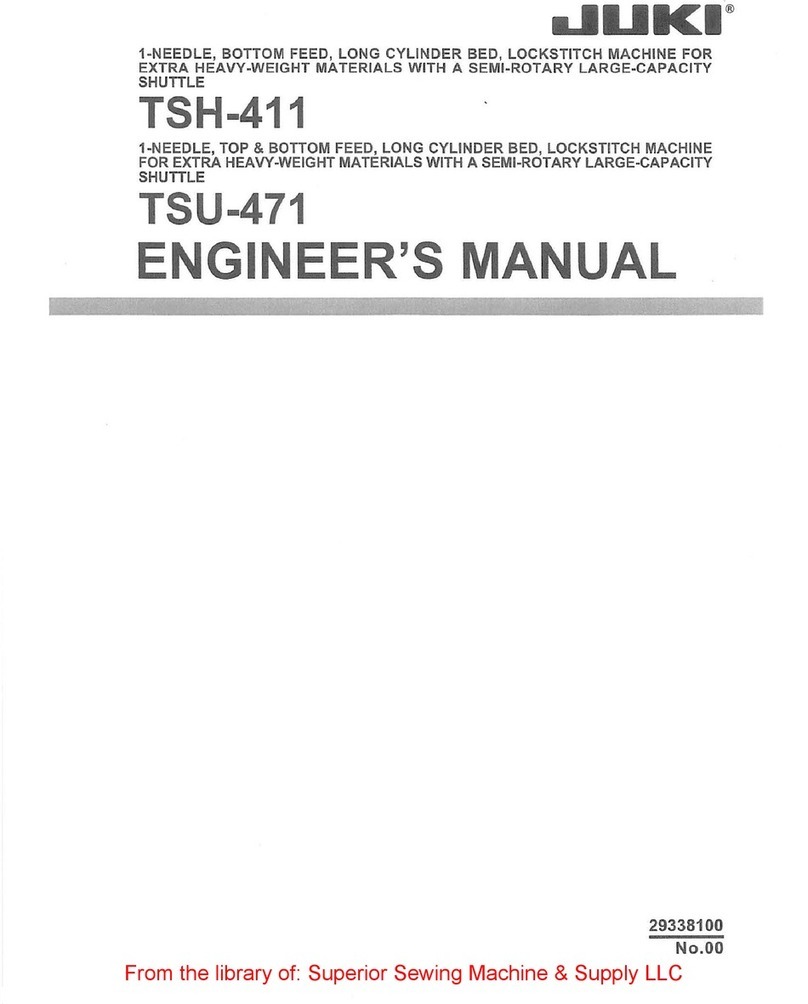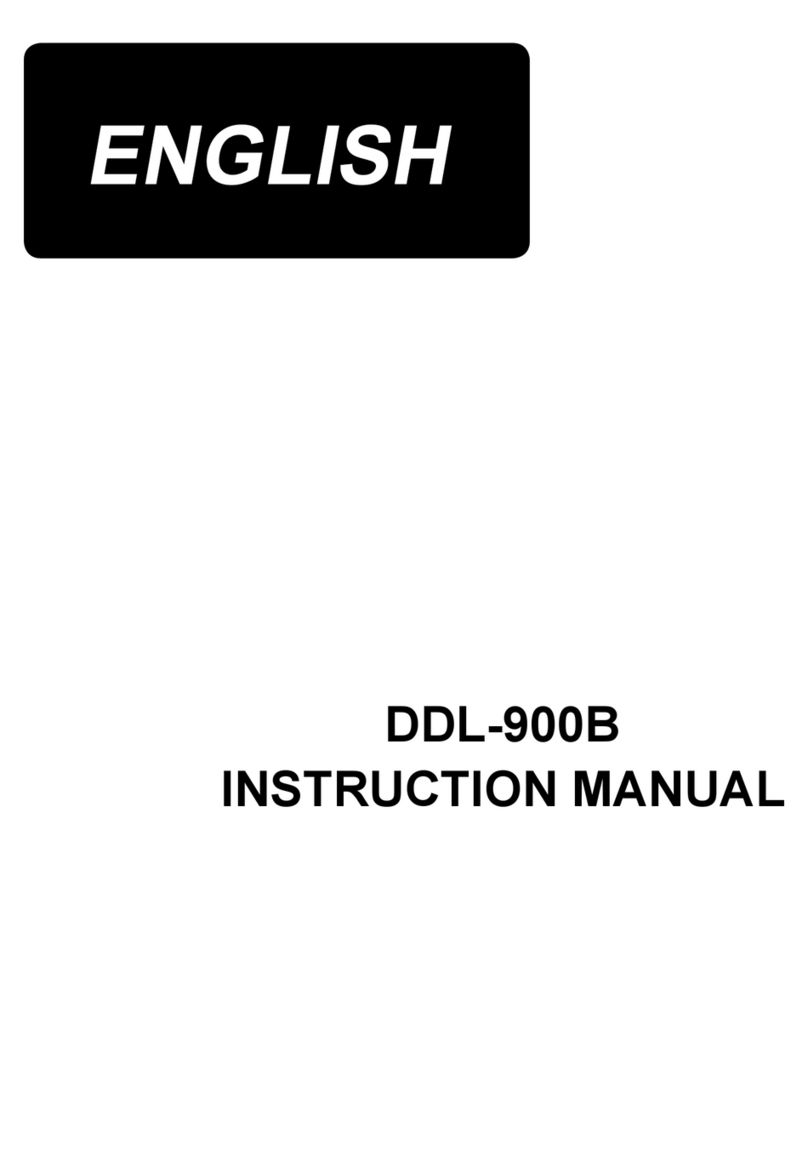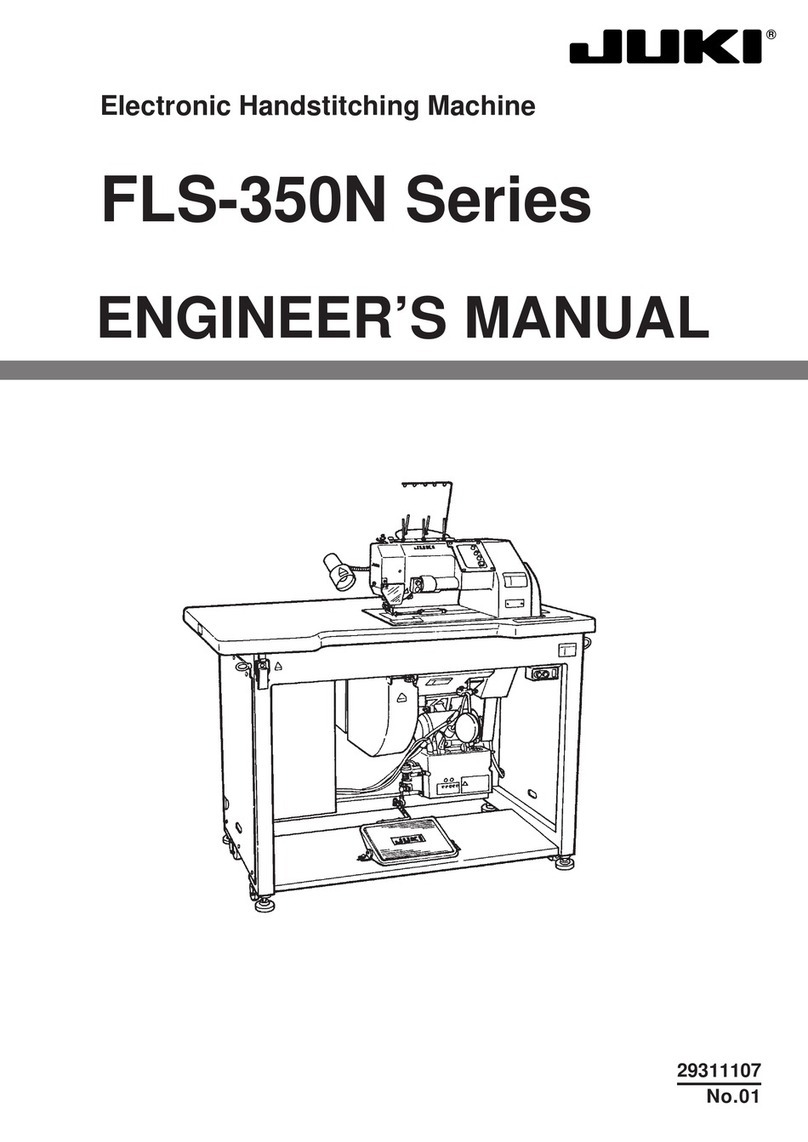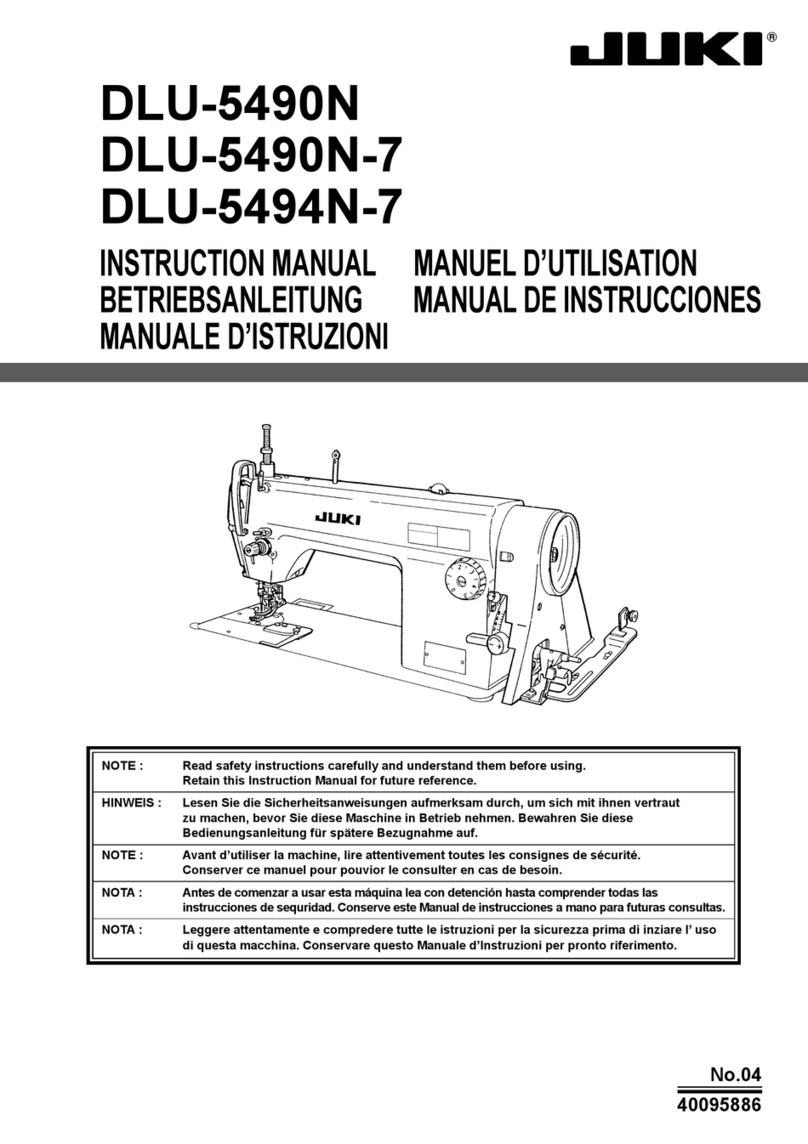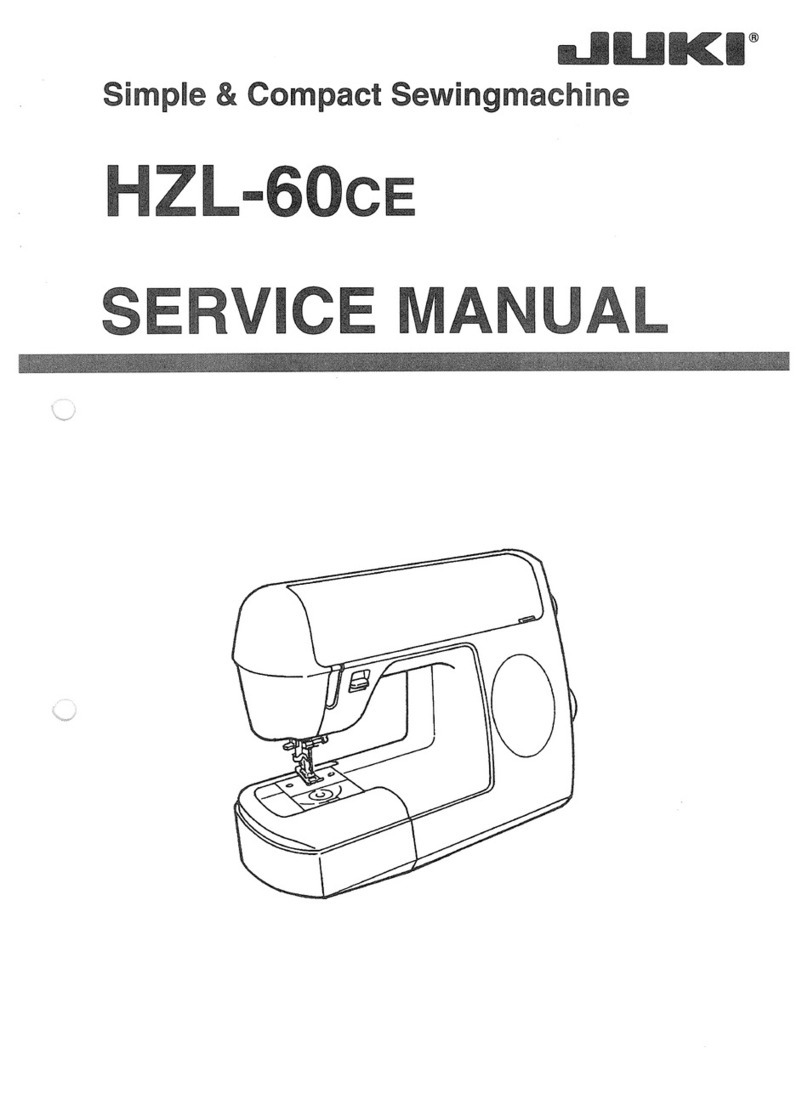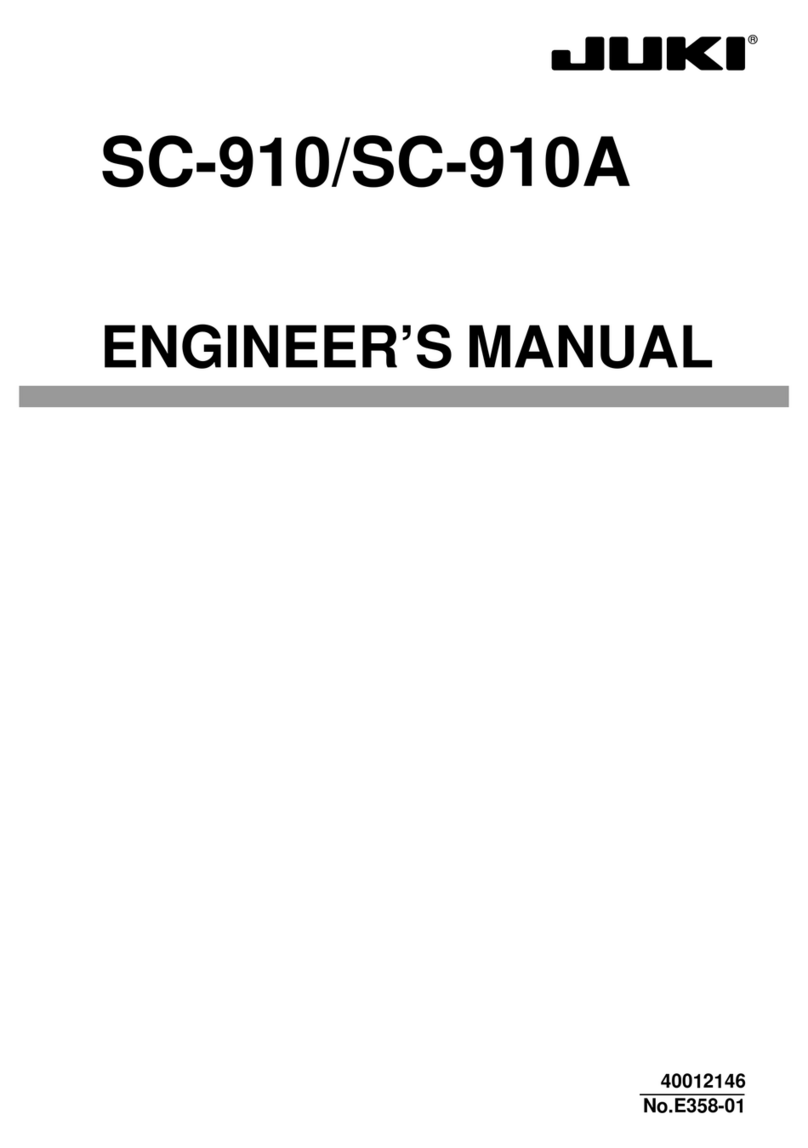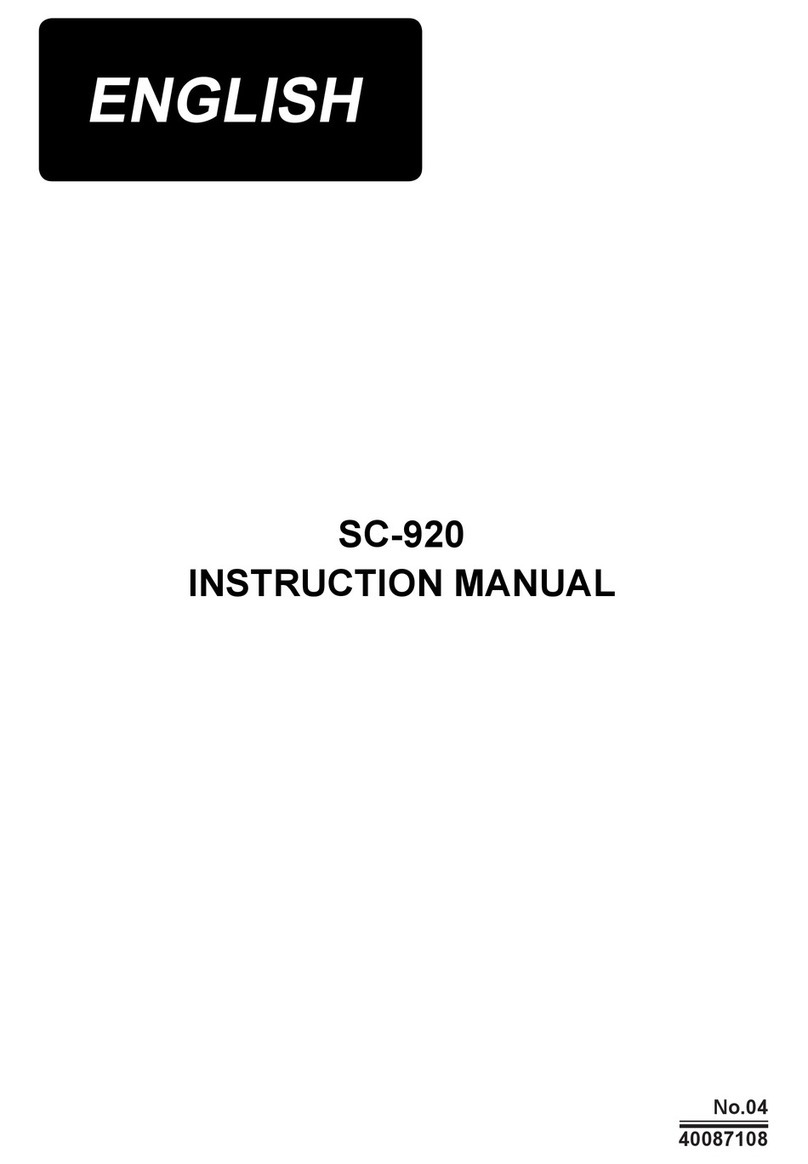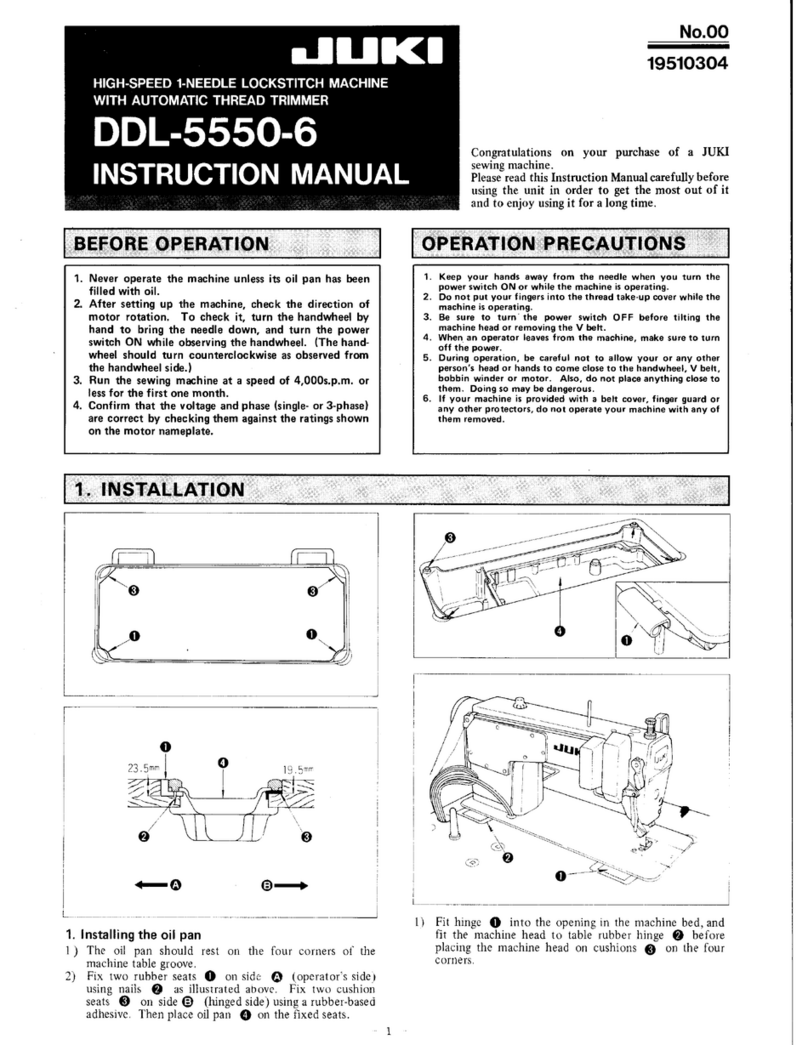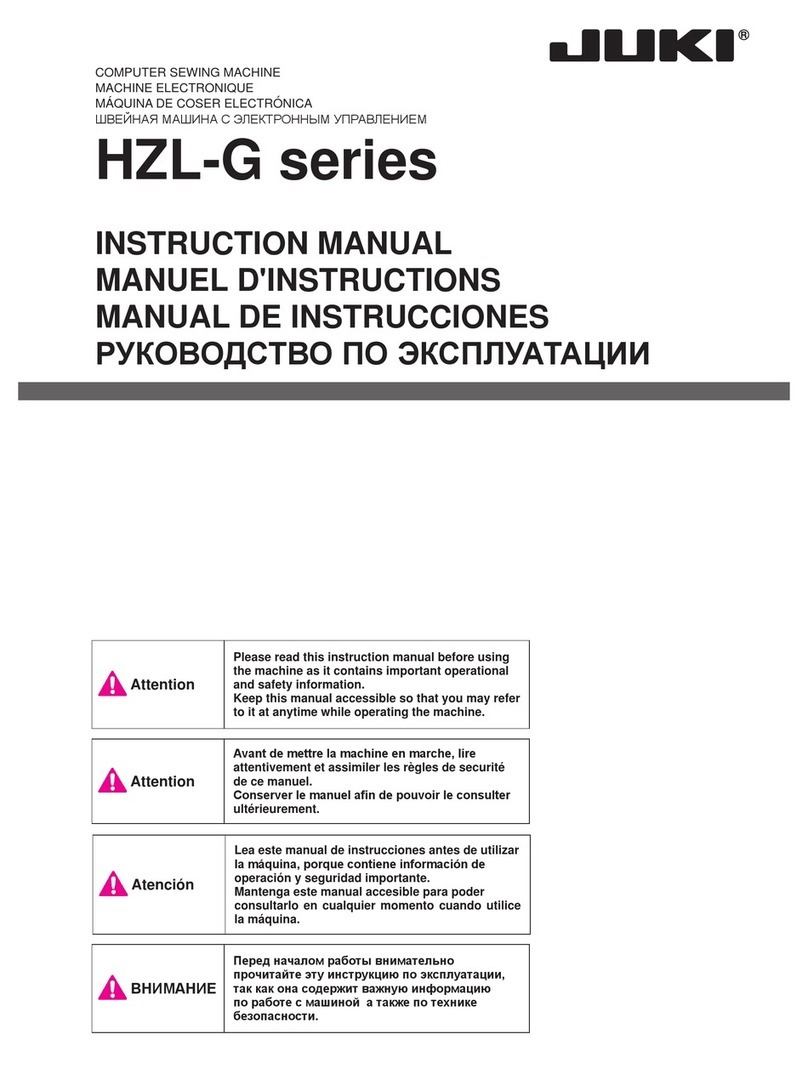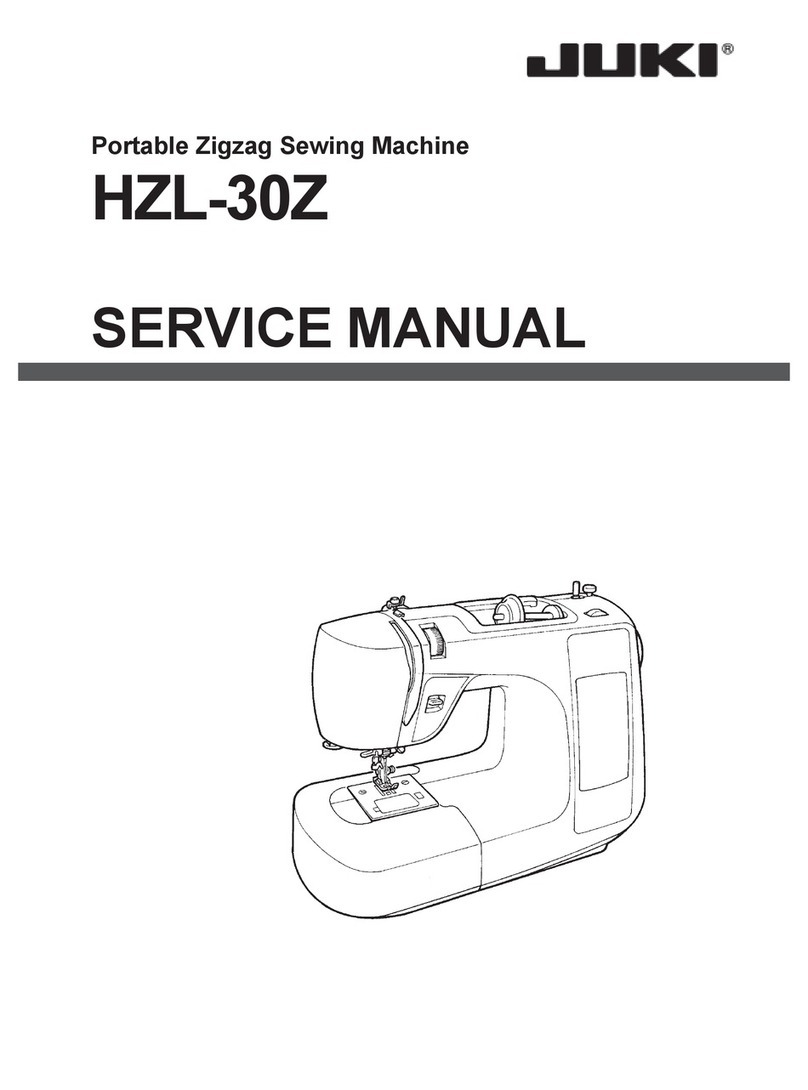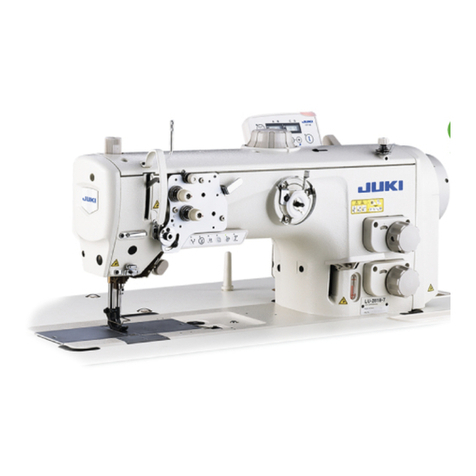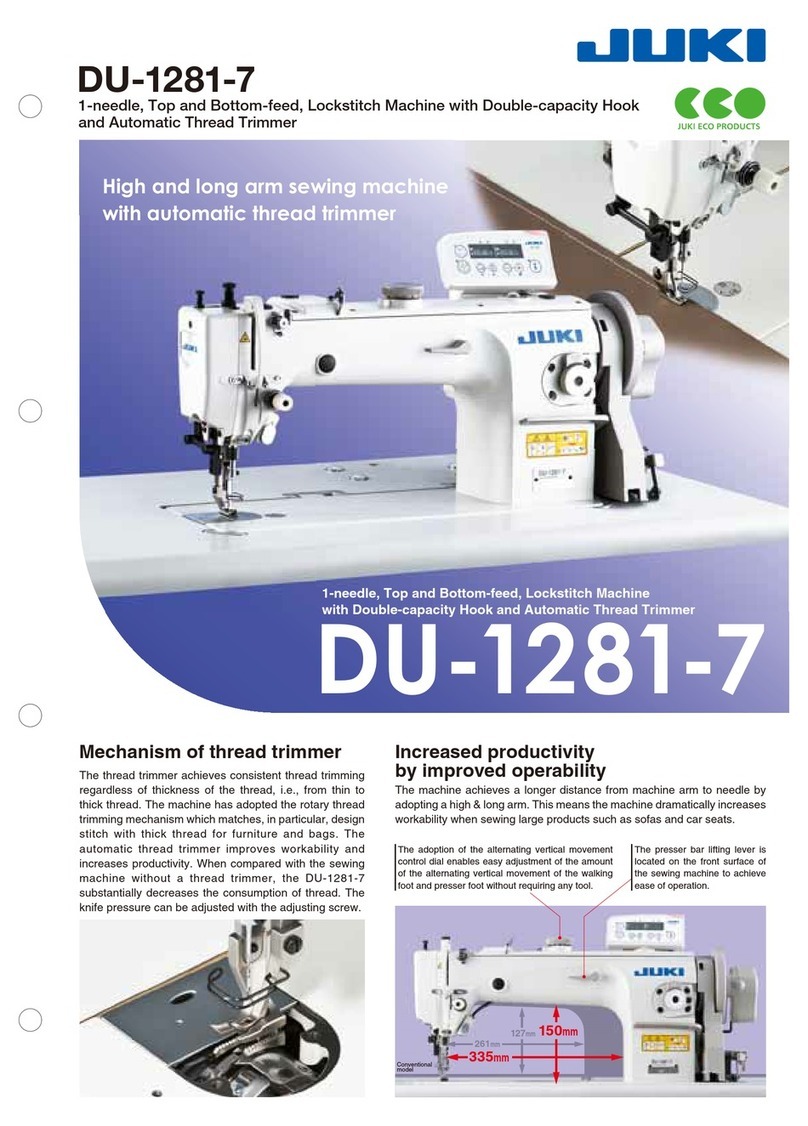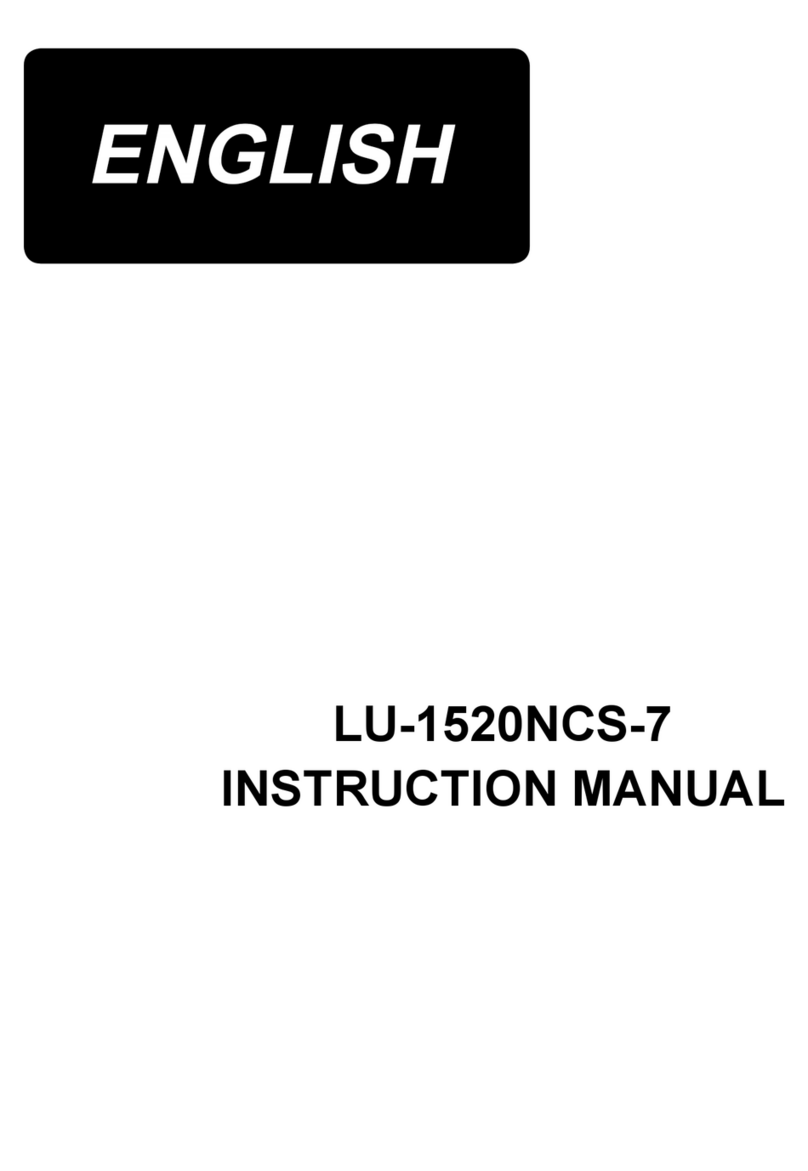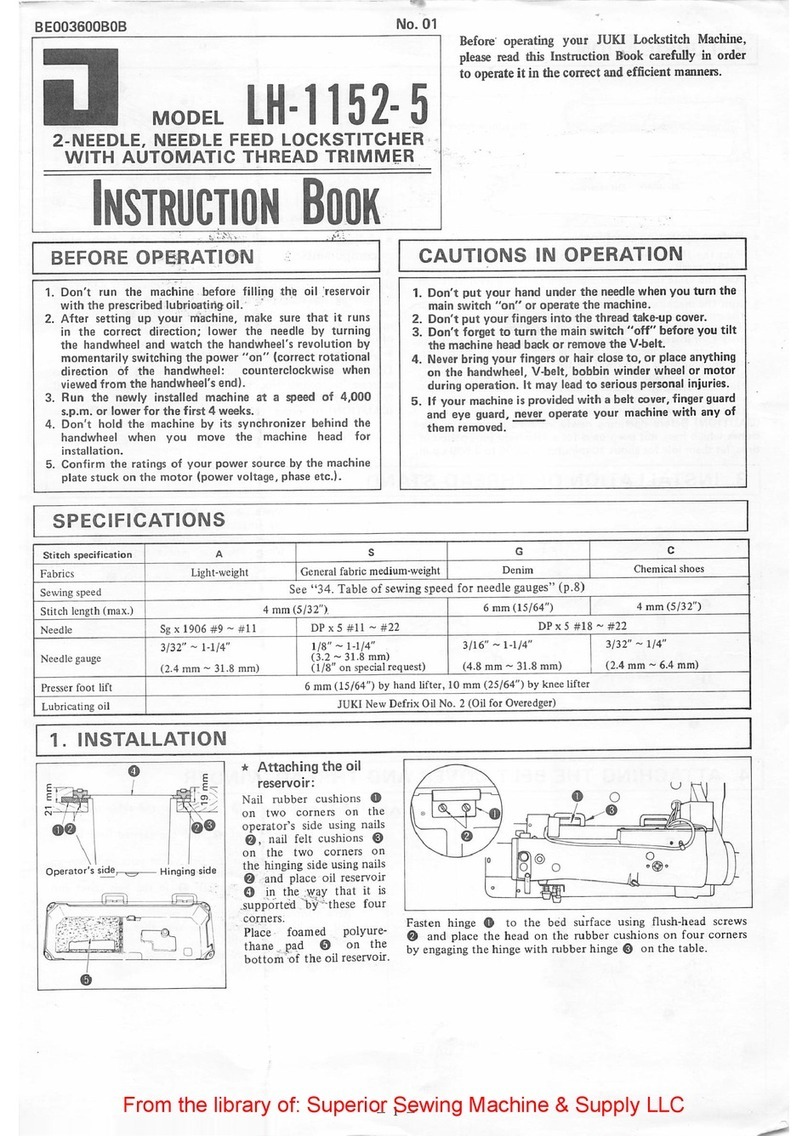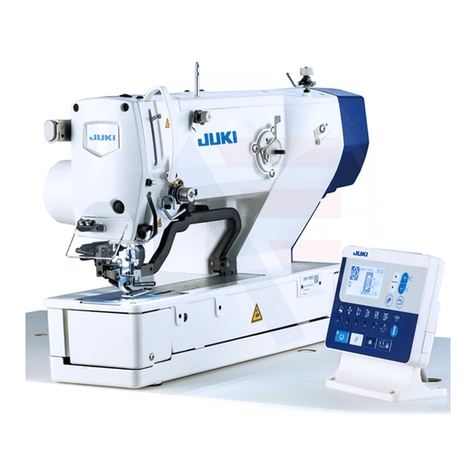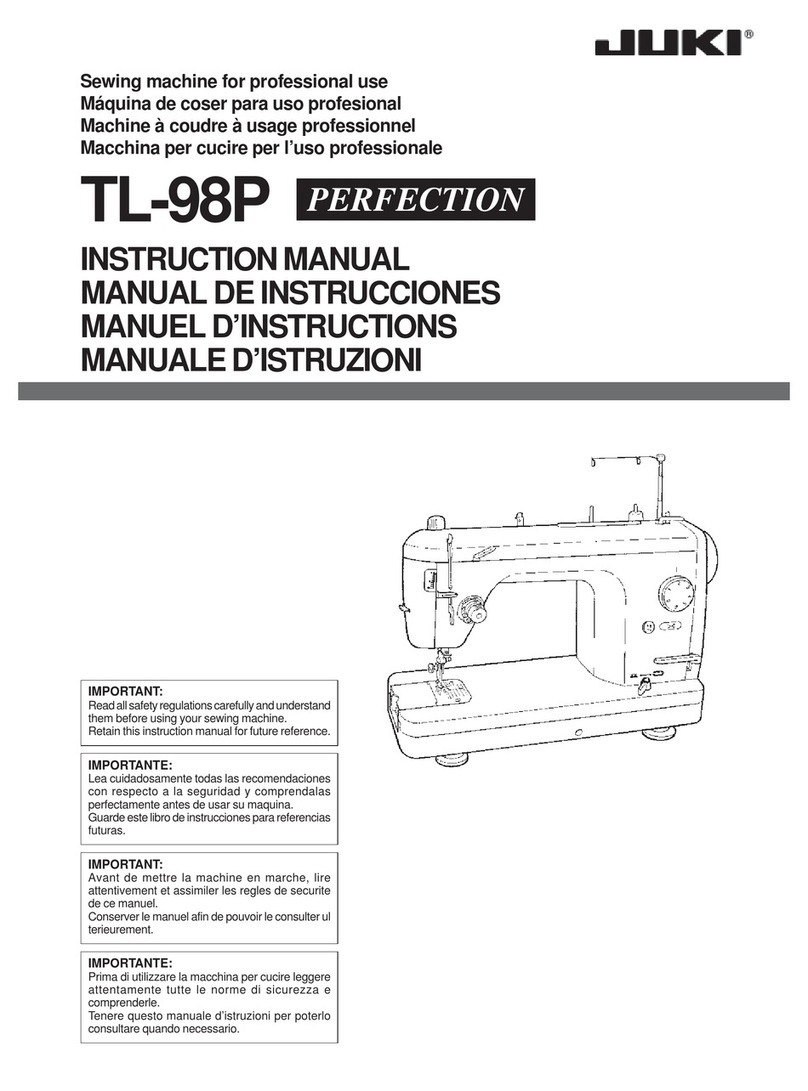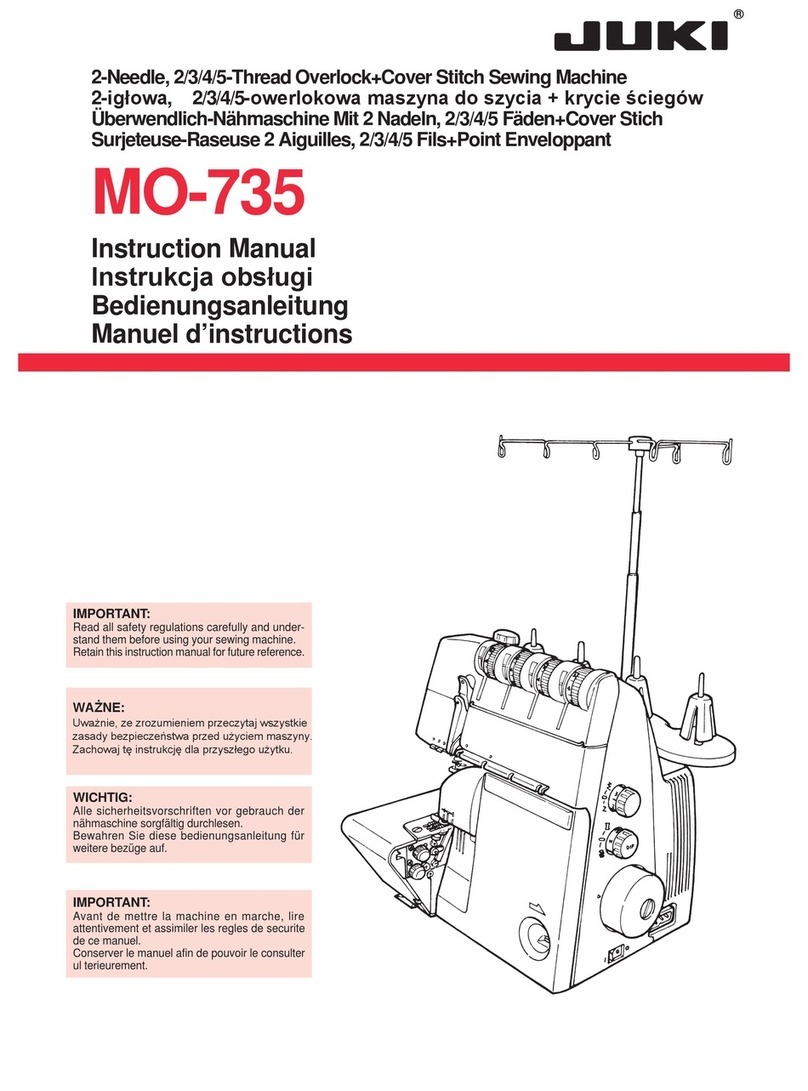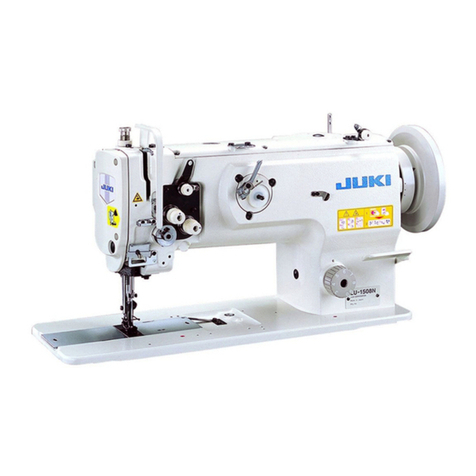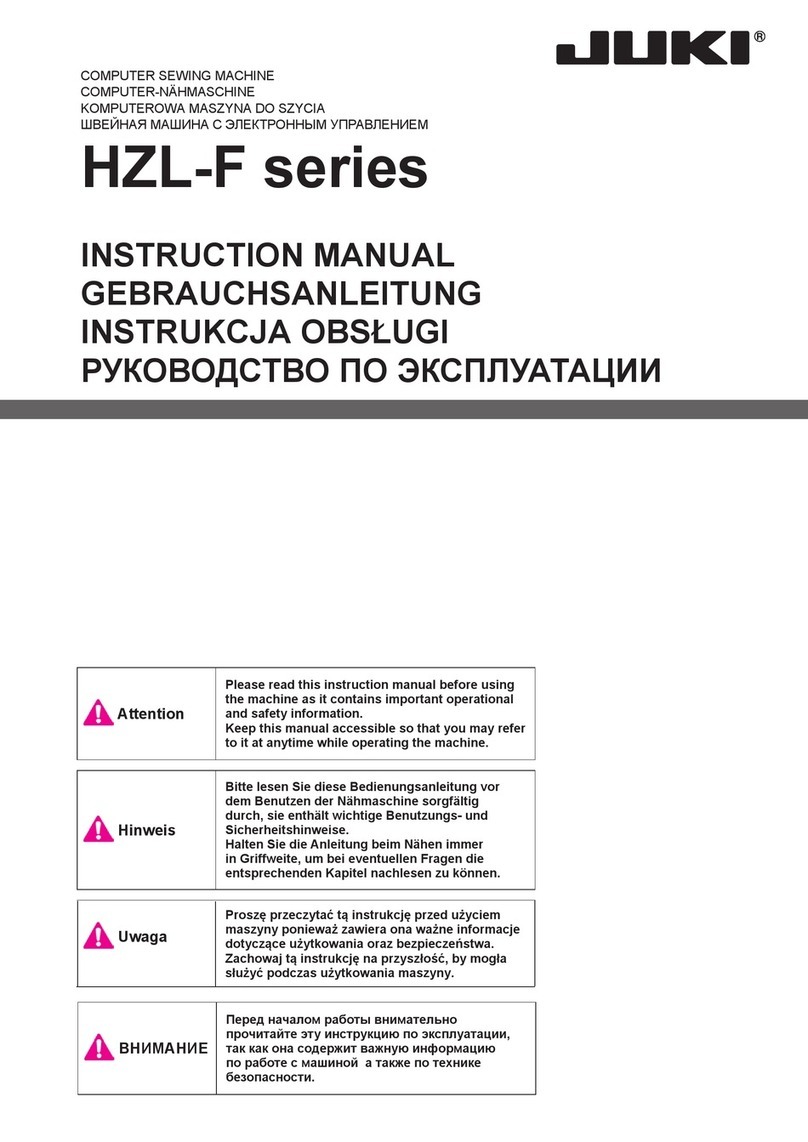Be sure to observe the following to protect against a re, electrical shock, injury or damaged components.
* Be sure to unplug the machine before disassembly, assembly or adjustment of the machine.
* Be sure to use the proper genuine parts when changing any of the machine parts.
CAUTION:
CONTENTS
1. Specications ..................................................................................................1
2. Removing order of covers ..............................................................................2
2-1. Front cover ...................................................................................................................2
2-2. Base plate .....................................................................................................................2
2-3. Rear cover ....................................................................................................................3
2-4. Cloth plate ....................................................................................................................3
3. Installation of throat plate ..............................................................................4
4. Height of needle bar ........................................................................................4
5. Position of feed dog ........................................................................................5
6. Adjusting stroke of main feed dog ................................................................6
7. Adjusting stroke of sub feed dog (MO-114D) ................................................7
8. Height of feed dog ...........................................................................................8
9. Feed dog timing ...............................................................................................8
10. Position of balance weights and cams..........................................................9
11. Projecting amount of upper looper ................................................................9
12. Radius of lower looper ..................................................................................10
13. Adjusting lower looper thread guide lever ..................................................10
14. Adjusting loop lift ..........................................................................................11
15. Timing between upper and lower looper .....................................................12
16. Installation of needle guards ........................................................................13
17. Position of upper looper thread take-up .....................................................13
18. Height and lateral position of presser foot .................................................14
19. Adjusting oating amount of thread tension disk ......................................15
20. Thread tension controller .............................................................................16
21. Position of needle thread take-up ................................................................17
22. Belt tension ....................................................................................................18
23. Position of lower knife ..................................................................................18
24. Engagement of upper knife with lower knife ..............................................19
25. Position of cloth plate ...................................................................................20
26. Adjusting presser foot pressure ..................................................................20

